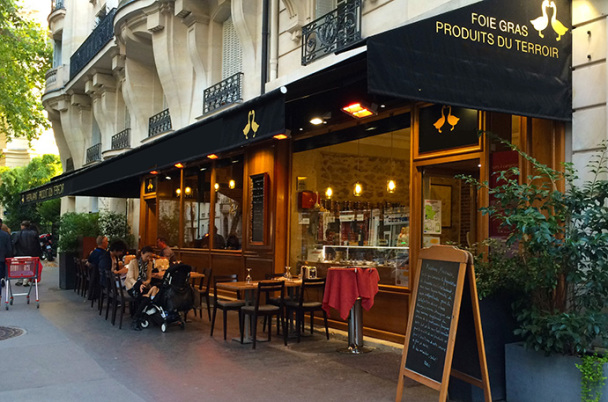What is Digital Transformation, really?
At its core, digital transformation isn’t about internet “unicorns”. It’s about using the latest technology to do what you already do — but better.
The biggest digital disruption is transparency. If you have a great product, customers will tell their friends, and if you have a bad one, they’ll tell the world.
Take, for example, the small family-owned restaurant I live opposite in Paris. I’ve known the owners for years, and they’ve been providing the same reasonably-priced, rustic food (a variety of foie gras and duck dishes, with toast) for decades.
Unusually for a Paris restaurant, the owners go out out of their way to provide a friendly atmosphere for tourists — just because they are nice people.
Until recently, that tourist-friendly attitude didn’t provide much of a payoff. The restaurant is a stone’s throw from the Eiffel Tower, but not so close that you’d naturally stumble across it. The tourists who enjoyed their experience might tell their friends when they got home, but that didn’t result in much extra trade. They were in guidebooks, but professional food critics didn’t really notice or care about the better experience for tourists.
Then along came TripAdvisor and mobile apps. Real people could easily find the restaurant and share their positive feedback with other tourists. Suddenly, the restaurant rocketed up to being one of the top 20 highest-rated restaurants in Paris (out of almost 14,000!). Because of the extra demand, the owners were able to buy out the next-door business, triple the number of tables, and hire extra staff.
There is absolutely nothing digital about the restaurant, yet they have absolutely been beneficiaries of digital disruption. It simply increased the returns on what they already did best: provide a great overall experience, not just a “product”.
What’s true for the restaurant owners is true for all of us. New cliché transformation stories like Uber and Air BnB aren’t only about new technology opportunities: ultimately, their success is about pent-up demand for a better experience.
Today, most of the hype about digital transformation focuses on things like using mobile technology to more effectively track and cross-sell customers. This can clearly add to profitability, but it’s unlikely to provide a big positive transformation to the customer experience (indeed, more spam marketing could easily do the opposite).
To really succeed, organizations have to go back to the very core of what they do, think about what their customers are “really” buying from them, and then use the latest technology opportunities to do it better.
They need to do much more than just bolt on some extra technology from a new supplier. To improve the core, they have to work on the core. They need to rethink enterprise processes, with faster, more agile workflows across different functional areas and complex supply chains. They need work with their strategic enterprise systems to make sure that they are adapted for the needs of tomorrow.
Finally, a postscript on the restaurant. Perhaps inevitably, their rating has been slowly drifting back down the TripAdvisor charts.
It’s still in the top 100, and the best reviews still mention the cheerful, friendly owners, but some others say things like “well, it’s a nice restaurant, but I don’t see why it’s that special”. That’s because what did make it special — the extra effort to be friendly — hasn’t necessarily been retained with the new staff.
And thanks to digital transformation, all the world can see.


Comments
2 responses to “What is Digital Transformation, Really?”
[…] Today’s Chief Marketing Officers (CMOs) are well aware of the possibilities that new technology offers to differentiate from the competition and are predicted to outspend CIOs on tech by 2017. But many CMOs are hopeless at technology. The CDO role helps bridge the innovation gap between the CIO and the CMO: using the latest technologies to help focus on customer needs. […]
[…] Today’s Chief Marketing Officers (CMOs) are well-aware of the possibilities that new technology offers to differentiate from the competition, and are predicted to outspend CIOs on tech by 2017. But many CMOs are hopeless at technology. The CDO role helps bridge the innovation gap between the CIO and the CMO: using the latest technologies to help focus on customer needs. […]